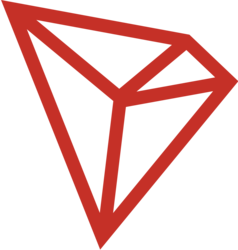In a strategic move to enhance decentralization and security, Canto, a Cosmos-native layer-1 blockchain, has decided to migrate to Ethereum as a layer 2 zero-knowledge rollup. This migration follows a similar decision by Astar, another layer-1 blockchain that is transitioning from the Polkadot ecosystem to Ethereum.
Canto, designed as a permissionless general-purpose blockchain with Ethereum Virtual Machine (EVM) compatibility, aims to facilitate the integration of traditional financial sectors into decentralized finance applications.
Under an agreement reached by Canto Commons, a platform for coordinating ideas and solutions for the protocol, the core developers of Canto will construct a ZK rollup on Ethereum’s second layer. This strategic move will enable Canto to leverage a shared ZK bridge, providing seamless access to the liquidity within the unified Polygon ecosystem and Ethereum.
Polygon Labs highlighted that Canto’s integration with Ethereum will inherit Ethereum’s robust security features, thereby increasing decentralization and trust when bridging assets. This security is bolstered by a top-notch and actively used ZK prover, ensuring user and community safety through cryptography, rather than relying solely on social-economic incentives provided by fraud proofs.
Importantly, this migration will not necessitate changes to Canto’s validators or staking system, ensuring a smooth transition.
Canto is now following in the footsteps of Astar, Gnosis Pay, Palm, and IDEX, all of which have recently announced plans to develop ZK layer 2 solutions using Polygon’s Chain Development Kit (CDK), as stated by Sandeep Nailwal, co-founder of Polygon Labs.
In a parallel development, Astar’s team announced its intention to create its Ethereum layer-2 scaling solution, known as Astar ZK-Ethereum Virtual Machine (EVM), also making use of Polygon’s CDK. The objective is to establish a trustless bridge to Ethereum with high EVM equivalency, enabling dApp developers to utilize existing tools across their ecosystem.
Polygon Labs envisions that the ZK-powered chain will empower businesses to implement Web3 solutions with enhanced speed, scalability, and security, both in Japan, where Astar is based, and globally. This migration trend to Ethereum’s layer 2 solutions is catching the attention of the crypto community, with some speculating that it could mark the beginning of a widespread adoption trend.
However, it’s worth noting that not all protocols are moving in this direction. Some are exploring alternative ecosystems. Decentralized exchange dYdX, for instance, has expressed its intention to build a “purely decentralized” order book exchange on Cosmos, as part of its migration plan away from Ethereum. Similarly, Maker has signaled plans to distance itself from Ethereum, opting to build a new, more “efficient” chain using Solana’s codebase. The decision is rooted in Solana’s resilience during the FTX incident and the high-quality pool of talented developers contributing to Solana’s ecosystem.
Moreover, the non-fungible token collection OnChainMonkey is migrating its entire collection of 10,000 NFTs from Ethereum to Bitcoin, citing a more secure base layer and a thriving Bitcoin Ordinals ecosystem as the primary reasons behind this shift.




























